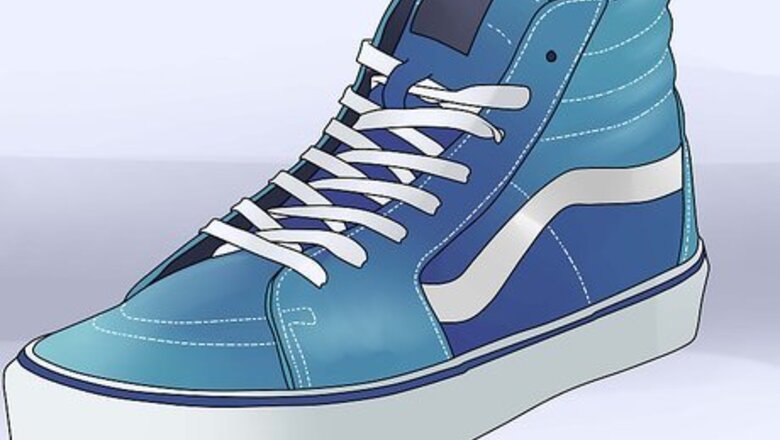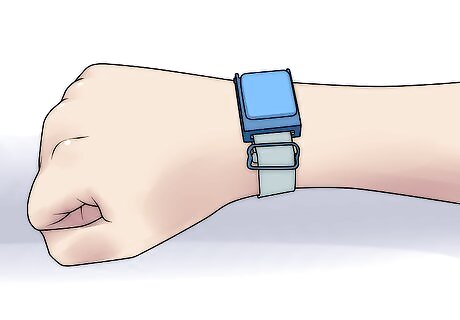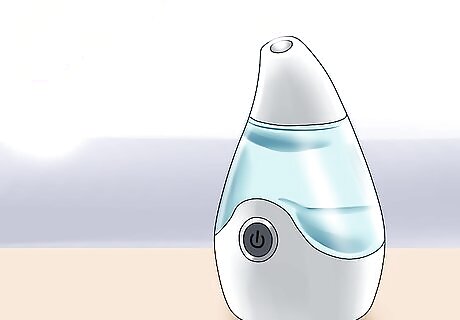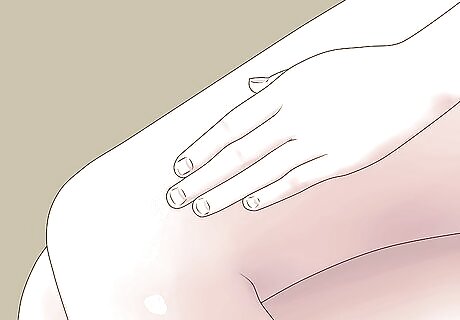
views
Changing Your Wardrobe

Change your footwear. Static electricity is generated whenever two materials come into contact with one another. Oftentimes, footwear scraping across fabrics and other surfaces generates electric shock. People tend to build up electrostatic charge when they walk around, but certain types of shoes can reduce the risk of shock. Rubber is a powerful insulator. If you have carpeted floors, or work in a carpeted office, wearing rubber soled shoes greatly increases your chance of experiencing static shock. Opt for leather-soled shoes instead. Wool is also a good conductor and can rub against fabrics to generate static charge. Try going for cotton socks over wool socks.

Be careful with certain fabrics. The type of clothing you wear can increase your risk of static shock. Certain fabrics are better at conducting electricity than others and should be avoided. Layering in general, even with similar materials, can increase the likelihood of static shock as materials with different electron charges can interact to produce static shock. Synthetic fabrics, like polyester, conduct electricity well. Limiting the use of such materials in your personal wardrobe can reduce risk of static shock. Wool sweaters and wool clothing in general, tend to produce a more static shock. Opt for cotton when possible.

Invest in anti-static wristbands. Some companies sell wristbands you can wear to reduce your risk of static shock. If altering your clothing and footwear does not work, this might be a wise investment. Static shock bracelets work using a process called passive ionization. The conductive fibers found in the bracelet will flow off the strings and into your wrist, reducing the voltage in your body, and therefore, the intensity of static shocks. Static shock bracelets are relatively inexpensive. They usually cost under $10.
Preventing Static Shock at Home

Humidify your home. Static shocks are more likely to occur in dry environments. Keeping your home humid can reduce your risk. Ideally, your home should be above 30% rh, or relative humidity. You can measure the humidity of your home by purchasing a humidity thermometer online or at a hardware or grocery store. Raising the air humidity to 40 or 50% rh can help reduce static shock. You should aim for this range. Humidifiers range in price. Large humidifiers, designed to work in a large space, can cost over $100. However, a humidifier for a single room might only be $10 or $20.

Treat your carpeting. Having carpeting at home instead of wood floors puts you at greater risk for static shock. Certain measures can be taken to make your carpet less conductive to static electricity. Rubbing fabric softener sheets over the carpet can prevent the buildup of static electricity but such methods do not have a permanent effect. Try repeating the process once a week. You can also place cotton rugs on areas of the carpet that you walk across frequently as cotton is less likely than certain fabrics to conduct electricity and cause static shock.

Adjust your bedsheets. If you're getting electric shocks in bed, adjusting your bedding might help. Opt for materials like cotton over synthetic fabrics or wool. Try not to layer sheets, as fabrics rubbing together can cause static buildup. If your bedroom is warm enough, you may be able to ditch your top sheet or blanket.
Avoiding Static Shock in Public

Moisturize your skin before going out. Excessively dry skin, especially dry hands, increases the risk of static shock. Always moisturize your skin before you go out. If you wear panty hoes or silk lining, make sure you moisturize your legs before getting dressed to go out. Keep a travel sized bottle of lotion in your purse or backpack in case your skin gets dry at work or school. Be especially careful to remember lotion during months, where dry skin is a common ailment.

Take precautions shopping. Many people experience static shock when shopping. There are measures you can take to reduce the effect. When pushing a cart, hold onto to something metal like your house keys. This discharges any energy you build up walking before you touch anything with your bare hands. Wear leather soled shoes over rubber soled shoes when shopping, as the former are less likely to conduct electricity.

Avoid static shock when getting out of the car. Static shock is common in cars. There are ways you can avoid getting shocked when leaving your car. Sitting in the car generates electrostatic charges because of the constant friction and motion caused by the movement of the car itself. When you leave the seat of your car, you take some of this charge with you. Your body voltage ends up rising when you exit a car. The voltage discharges when you touch the car door, causing a painful static shock. You can prevent this by holding onto a metal part of the door frame as you leave your seat. The voltage will dissipate into the metal painlessly. You can also hold your keys before touching the car door, allowing the voltage to move to the metal in your keys without causing you any pain.


















Comments
0 comment